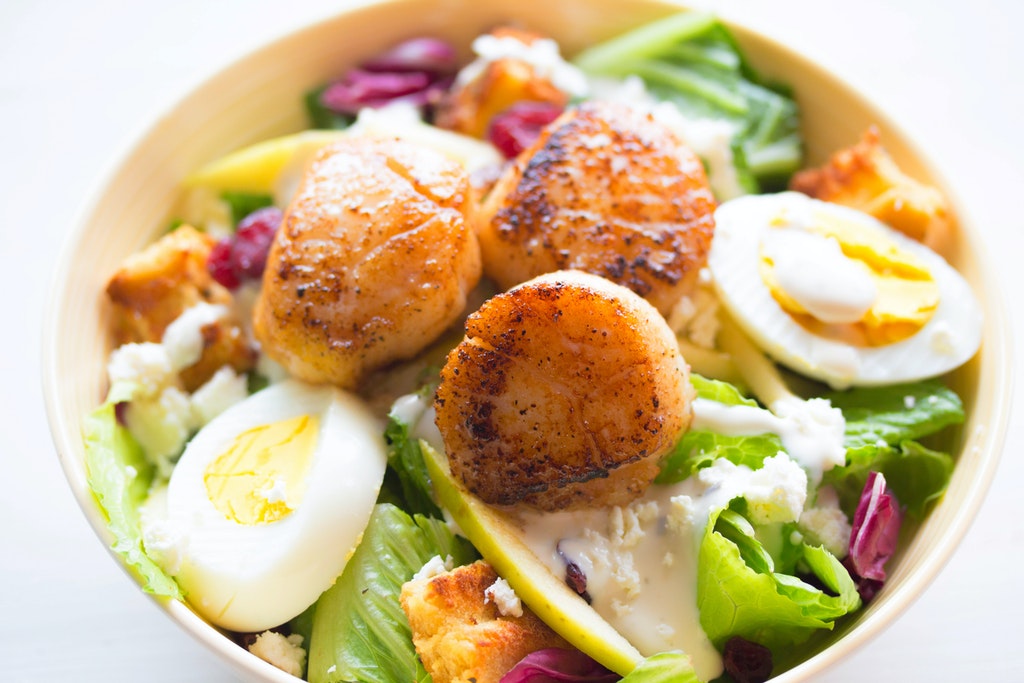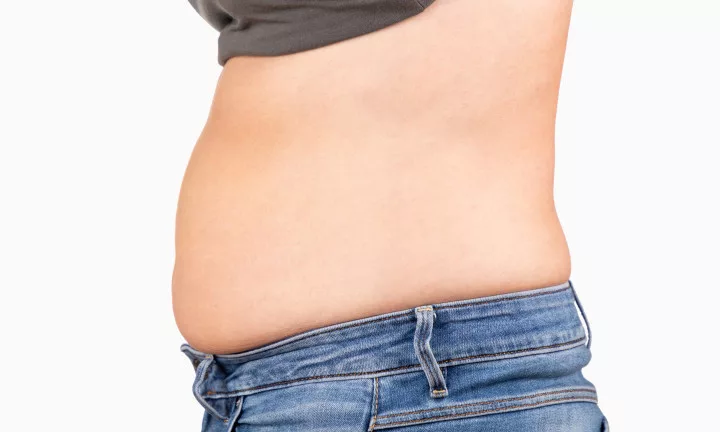Stacey Mattinson, RDN, based in Austin, Texas, says, “The ketogenic diet is a low-carb diet plan that drives your body into ketosis.”
Ketosis is a typical metabolic process that your body does to keep working. It burns fat if it doesn’t have enough carbohydrates to burn for energy. As a result, it forms ketones. Fats help our body use vitamins and store energy.
When on the keto diet, you reduce carbs by intaking foods with low carbs. When the body starts running out of carbs, it uses fats to meet its energy needs.
You are meeting the calorie needs of the body by consuming fats. During the keto diet, you take foods low on carbs and protein.

What happens to our bodies during ketosis?
Let’s first understand what ketones are. Ketones are chemicals that our liver produces when there isn’t enough insulin in our body.
Insulin is needed to convert sugar (or glucose) into energy.
Our body forms ketones in the liver from fat. They are used as fuel by the different parts of our body, including the brain.
The brain is a hungry organ; everyday, it consumes a lot of energy. It can’t run on fat directly. So, it can only run either ketones or glucose on a low-carb diet to feed the energy it needs.
The science behind the keto diet is based on how our body reacts naturally to meet its energy demand. During the ketogenic diet, insulin in our body becomes very low. It dramatically increases the burning of fat. Ketones are a more efficient fuel source than glucose, as it serves energy production.
The Keto diet’s popularity is due to its dramatic fat-loss potential.
The reason behind the popularity of the keto diet
The Keto diet is not something new. The foundation of the Keto diet is as old as the concept of dieting. It is a strict low-carb, and gluten-free diet.
It is similar to the Paleo diet and the Atkins diet.
The Keto diet is like a supercharged version of an old idea.
Our ancestors didn’t eat refined carbohydrates and sugars like we do today, so our bodies still haven’t adapted to those foods.
Doctors used the keto diet for treating patients who have seizure disorders and not for weight loss. Seizure disorder is a medical condition where episodes of uncontrolled electrical activity characterize a patient’s brain.
The concept is straightforward and based on real foods. You avoid foods that have sugar content, processed junk foods, and ones high in carbohydrates. Instead, you eat meat, fish, eggs, and natural fats.
The Keto diet’s benefit is not limited to weight loss; it improves your alertness and keeps you focused by eliminating sugar peaks.
People on the keto diet feel less hungry.
The popularity behind the keto diet has been the support and promotion by celebrities and influencers on social media. It has been popularized as the antidote to various ailments.
How low carb is keto?
The answers vary depending on every individual and their goals. In general, the fewer the carbs, the more significant the impact is.
You need to try the different versions of the Keto diet to get the best results.
Standard Keto Diet (SKD)
Most people think of a keto diet as a Standard Keto Diet. Conventionally, our food comprises 50% carbs, 30% protein, and 20% fat.
The standard keto diet is deficient in carbs, i.e., 5%, moderate in protein i,e 20%, and high in fats, i.e., 75%. If you want to drop fat quickly with mild exercises like cycling, walking, and yoga, SKD is ideal.
Your primary source of carbohydrates will be low-carb vegetables, nuts, seeds, and high-fat dairy products.
Targeted Ketogenic Diet (TKD)
The targeted ketogenic diet allows adding carbs around workout times. You will be following the standard ketogenic diet at other times. The best time for the TKD is 30-60 minutes before SKD.
A targeted ketogenic diet aims to maintain blood sugar and muscle glycogen moderately. It is a simple way to sustain high-intensity performance without interrupting ketosis for a more extended period.
The diet plan is recommended for two groups:
- If you need carbs to fuel your exercise performance
- If you are starting an exercise program and are not ready to perform the amount of exercise required
High-protein ketogenic diet
The high-protein ketogenic diet is similar to the standard ketogenic diet. But instead of a moderate protein intake (20%), the input is increased to 35%. The consumption of fat is 60% and the carb 5%.
Cyclical Ketogenic Diet (CKD)
A Cyclic Ketogenic diet is a dietary approach that combines carb-loading days with the Standard Ketogenic Diet. It involves periods of higher-carb re-feeds, like five ketogenic days followed by two high-carb days.
CKD aims to entirely replete glycogen during carb loads and depletes glycogen while increasing ketone levels between the carb loads.
If you are a bodybuilder or athlete doing an advanced high-intensity workout, we recommend the cyclic and targeted keto diet.
Only the standard and high-protein ketogenic diets have been studied extensively. The standard ketogenic diet is the most researched and recommended of all.
Keto Diet For Beginners: Should you or should you not?
The thumb rule before starting any diet plan is to consult a doctor. The Keto diet is no exception.
You should undergo a health screening test to rule out any contraindications.
Following a keto diet means you are going to make a lot of changes to your regular diet. Your body may not be able to adjust to these sudden changes. You may not be as healthy as you appear.
The calorie intake is dropped to just two to four percent of your total caloric intake. Any significant change in your diet should be discussed with your doctor.
Despite its tempting weight-loss promises, there are certain situations where you should avoid a ketogenic diet at all costs.
If you are a patient with diabetes, kidney, liver, or pancreatic diseases, a rare condition called muscular dystrophy can complicate your disease. Sorry, it is not recommended for you.
Pregnant Women
The mother should always take care of her nutrition during pregnancy as it directly affects the unborn child.
The Keto diet drives you away from many nutrient-dense foods like fruit. They are packed with minerals and vitamins, which are crucial for the development of a baby.
Prolonged maternal ketosis has been associated with the infant’s developmental problems, which could increase the risk of neural tube deformities such as Spina bifida and affect brain development.
Spina bifida is a congenital disability with an incomplete closing of the backbone and membranes around the spinal cord.
Ketogenic diet results in alternations of embryonic organ growth. These alternations may result in organ dysfunction and potential behavioral changes in postnatal life.
The risk of harming the baby from being in ketosis is too high during pregnancy, so doctors do not recommend a Ketogenic diet.
Breastfeeding women
During breastfeeding, your body loses sugar. It is highly recommended to avoid a Keto diet during this period.
A Low-carbs diet, in this case, can lead to a dangerous condition called ketoacidosis.
Ketoacidosis is a hazardous condition that occurs after prolonged inadequate food intake. It happens in combination with stress and other medical conditions.
So, it is essential to get enough carbs and nutrients while breastfeeding.
Anorexia patient
Anorexia Nervosa is an eating disorder. Anorexia People with anorexia have an acute fear of weight gain that distorts their perception of body image.
They try to minimize their weight through starvation levels, calorie restriction, and dietary fat avoidance. It is very dangerous.
Always remember your body can function without a carb, but it cannot function without fat. 2/3 of our brains are fat, so the brain cannot perform without dietary fat.
It may be tempting for a person with anorexia to embark on a ketogenic diet.
As the ketogenic diet already restricts protein and carbohydrates, if fat is limited, it could be deadly because your body has neither carbs nor fat to burn.
There are compelling disputes over the use of ketogenic diets in anorexia. We recommend you stay away if you are suffering from anorexia.
Hypo-causing medication
Hypo-causing medications are drug-induced with low blood sugar. These are designed to increase insulin in the body.
Following a low-carb Ketogenic-diet on these medications can increase the risk of hypos. You should speak with your doctor to take precautions against hypos before you jump to the Ketogenic diet.
Go for regular blood glucose tests and avoid typos.
Keto Diet For Beginners: Food to have and avoid
Achieving ketosis is quite straightforward but can be complicated and confusing if you haven’t done it before.
Our body uses three macronutrients for energy: carbohydrates, fats, and proteins. Carbohydrates are the primary source.
The keto diet focuses on reducing carbs and protein intake while increasing fats. It forces our body to go to fats to meet our needs.
Here are some necessary steps to start:
- Calculate your caloric needs, and subtract or add calories based on your goals.
- Set protein levels according to your goals. 0.8-1g/0.282-0.035oz of protein per pound of lean body mass is a good starting point.
- Set the carbohydrate levels. Regularly around 20-30g/0.705-1.058oz of net carbs daily.
- Set the fat intake based on how many calories you have left.
- Here is the bottom line on what you need to do:
Carbohydrates
Fruits, grains, vegetables, and milk products contain carbohydrates in sugar, starches, and fibers. Our body uses carbs to get the energy it needs to function.
The total carb intake varies based on the individual. The carbs we consume are comprised of non-fiber carbs and fiber carbs.
Non-fiber carbs are fattening, while fiber carbs are non-fattening. Generally, we only focus on the net (non-fiber carb).
Net carbohydrates= Total carbohydrates – fiber – sugar alcohols
If you want great results, you have to limit both amounts of carbs. The best idea is to stay below 20g(0.705oz) to 35g(1.234oz) total carbs per day.
We recommend you stay between 5-10% of the total calories.
Based on your lifestyle, the intake of carbs differ. You can consume more carbohydrates if you have a very active lifestyle (exercise 4 to 5 times a week). Still, if you have a sedentary lifestyle and are overweight, we recommend keeping it as low as possible.
Ketogenic diet food list: Carbohydrates
During the ketogenic diet, you want to derive carbohydrates from nonstarchy vegetables.
The best nonstarchy vegetables for the keto diet are:
- Asparagus
- Arugula
- Bell peppers
- Broccoli
- Brussels sprouts
- Cabbage
- Cauliflower
- Celery
- Cucumber
- Eggplant
- Fennel
- Green beans
- Kale
- Mushrooms
- Pepper (red and green)
- Spinach
- Tomatoes
- Zucchini
- Lettuce
If you are confused, remember foods that grow above the ground are low in carbs.
Starchy vegetables to avoid:
- Beetroot
- Carrots
- Celeriac
- Corn
- Green Pea
- Onion
- Parsnip
- Plantain
- Sweet Potatoes
- Taro
- White Potatoes
- Winter Squash
- Yams
The remaining carbohydrate intake should come from the carbs in nuts and seeds—the small amount from dairy and fruits like berries.
Here is the list of best low-carb nuts and seeds for ketogenic:
Nuts and seeds for the keto diet
- Almonds
- Cashews
- Coconut (shredded unsweetened)
- Macadamias
- Hazelnuts
- Peanuts
- Peanut Butter (chunky salted)
- Pistachios
- Pumpkin Seeds
- Walnuts
Protein
Our body uses proteins for building and repairing tissues. It is made of several smaller units called amino acids.
Protein fuels up your body with the necessary amino acids to regulate organs and builds connective tissue. Our hair and nails are mostly made of proteins. It is an essential building block of bones, muscle, cartilage, skin, and blood.
Usually, you should consume 0.8 g of protein per pound of lean body mass. You should eat 1.2 grams (0.042 oz) to up to 1.7 grams (0.059 oz) per kg of your body weight during the keto diet.
If you are underweight, physically active (resistance training), or healing from illness, injury, or surgery, you can consume up to 2.0 grams (0.070 oz).
Your goal is to consume 20-30 grams of protein at each meal for your body to incorporate amino acids into muscles.
Protein is an essential element of any diet.
You will worry. But the truth is that protein is necessary for ketosis. “Too much protein will not raise the blood glucose and decrease the ketone levels” it is only a myth. Don’t run behind it.
Our body performs a metabolic process named gluconeogenesis (GNG). During gluconeogenesis, our body allows the liver and kidney to make glucose from non-carbohydrate sources.
The rate of gluconeogenesis always fluctuates, depending on the metabolic state. It increases significantly when your carb consumption is low.
When your body is on a low-carb or keto diet, your cells must find another way to supply glucose to those tissues that need it. Gluconeogenesis ensures that you don’t die when there are no carbs in your system:
Gluconeogenesis prevents hypoglycemia. This means it maintains the level of glucose. In a keto diet, low blood sugar can cause seizures, loss of consciousness, and death.
GNG fuels those tissues that cannot use ketones. Like the red blood cells, kidney medulla, and testicles, some cells in our body only use glucose to survive. During ketosis, gluconeogenesis provides them with enough glucose to remain healthy.
A list of protein sources is mentioned below, with their proportion and nutrient content.
The best source of protein when on the keto diet:
- Almonds
- Black Beans
- Beef Jerky
- Chickpeas
- Chicken
- Cheese
- Edamame
- Eggs
- Greek Yogurt
- Lentils
- Milk
- Peanuts
- Peanut Butter
- Pinto Beans
- Canned Tuna
- Salmon
- Shrimp
- String Cheese
- Tofu
- Turkey
- Whey Protein Powder
- Yogurt
Seafood is an excellent source of protein as it’s low in fat. White meat poultry has lean protein, while dark meat is a little high in fat.
Fats
In the keto diet, fat is the primary energy source, for you are depleting your body of glucose. Most people do not consume enough fats, or they may have metabolic or thyroid problems.
Make sure you have an adequate amount of fat. Your body burns entire energy, depending on the fat you consume.
Again, healthy fats are the basis of the ketogenic diet.
The types of fat allowed on the keto diet are:
Saturated fats
Saturated fats are made from single-bonded carbon molecules that are completely saturated with hydrogen atoms.
They are found in higher quantities in animal products.
Saturated fats and cholesterol are known to increase cholesterol levels and build plaque in our arteries; however, recent studies show saturated fats are good fats.
It helps to keep our immune system healthy, normal bone density, and testosterone levels in check, and they are not associated with an increased risk of heart disease.
Now, let’s be practical.
Eating a burger or having another knob of butter will not clog your arteries. You should follow the Ketogenic diet for 4-6 weeks and get your blood tested for a lipid panel to check the cholesterol.
A ratio between 3 and 4 is good. If the rate is significantly higher than before, you need to shift to a lower-fat diet like Paleo or a Mediterranean diet.
Polyunsaturated fats
Polyunsaturated fats are usually found in vegetable oils and are healthy. But, vegetable oils are highly processed and unhealthy in high quantities.
Studies have shown that the intake of more refined vegetable oils contributes to cancer and heart disease.
Polyunsaturated fats can cause arterial plaque.
The artery is the bloodstream that carries blood and nutrition from the heart to the tissues in your body. A plague is a fatty and waxy substance that deposits in the artery wall and narrows it. This plague ruptures and reduces blood flow. It is the common cause of stroke and heart attack.
You don’t have to avoid all these fat sources. Omega-3 s, and Omega-6 s are polyunsaturated fats essential for optimal health.
Omega-3 s are commended for decreasing inflammation, lowering LDL cholesterol, and improving cardiovascular risks.
Omega-6 s are vital for maintaining a healthy immune system and an optimal inflammatory response.
Make sure that these products come from whole foods like nuts and seeds instead of processed oils and fried foods.
Monosaturated fats
Monosaturated fats have one double-bond carbon atom in their hydrocarbon chain. These fats are accepted to be healthy.
Many studies show that it can improve insulin resistance and optimize HDL (High-density lipoprotein)/LDL (Low-density lipoprotein) cholesterol levels. It is more stable than saturated fats.
Make sure you are getting plenty of monosaturated fats in your diet. Olive oil, macadamia nuts, avocados, avocado oil, peanuts, and peanut butter are some of the right sources of monosaturated fats.
Trans fats
Trans fats are artificial fats. An industrial process adds hydrogen to liquid vegetable oils and makes them solid. Most processed foods consist of trans fats.
Many doctors consider trans fats as the worst type of fat. These fats raise LDL cholesterol (bad) and lower HDL cholesterol (good). So, the intake of trans fast should be as low as possible.
Experts are worried about trans fat because it has increased the risk of chronic diseases like heart attack, stroke, and type 2 diabetes.
Being on a Keto diet doesn’t mean you can rely on any fat. Wisely choose your dish for the best results.
The best source of fat when on the keto diet:
- Almonds
- Animal Fat (non-hydrogenated)
- Avocados
- Avocado oil
- Butter or ghee
- Chia seeds
- Coconuts
- Coconut Oil
- Coconut Butter
- Cocoa Butter
- Egg Yolks
- Fatty Fish
- Flaxseeds
- Full Fat Yogurt
- Lard
- Hemp Hearts
- Macadamias,
- Mayonnaise
- MCT Oil
- Nuts
- Natural, no-sugar-added nut butter
- Olives
- Olive oil
- Pumpkin seeds
- Sesame seeds
Keto Diet For Beginners: Must follow instructions.
Drink enough water
Make sure your body is hydrated. During the ketogenic diet, the electrolytes in your body become depleted due to increased water excretion and decreased water retention.
A hydrated body not only helps regulate the vital functions in the body but also helps to control hunger levels.
Stop Snacking
Your body is burning fat, not the carb. It is a slow process. Unnecessary snacking leads to stalls and slows down weight loss.
Add exercise
Exercise is always healthy. Add 20-30 minutes of regular exercise to get the most out of your keto diet.
Even a short walk can help to regulate your weight loss and blood sugar levels.
Sleep well
8 hrs of sleep is a must for any diet plan. Deprivation of sleep and stress hormones increases blood sugar levels. It slows ketosis and weight loss.
It is much harder to stick to the diet plan and resist temptations.
Keeping stress under control is tough. It will not get you into ketosis on its own.
Keto Diet For Beginners: Food List
Foods to include
1. Fruits
Fruits contain a lot of carbs. They taste sweets and are nature’s candy. The sweeter the fruit is, the more sugar it contains. Take blueberries, for example; one cup contains about 18 g of net carbs. It accounts for an entire day’s carbs on the keto diet.
You cannot eat most fruits on keto. But you also don’t have to go fruitless.
2. Diary
Most dairy foods fall into both the fat and protein category. So, the diary has been given its section.
Always remember fat is fuel, and due to this reason, we eat dairy products during a keto diet. It is a high-quality fat source.
You might have much conflicting information about dairy products on a keto diet. The fact is, it depends. It counts on the product, the quantity, your goals, and the specific sensitivities such as lactose intolerance.
3. Drinks and Alcohol
A Ketogenic diet has a natural diuretic effect. It is common that if you are starting the diet plan, you may feel dehydrated often. You have to pre-adjust if you are prone to urinary tract infections.
Hydration plays a fundamental role in our everyday life. We recommend you drink a gallon of water every day. There are other drinks you can enjoy besides water.
Limit yourself to a maximum of 2 cups of caffeine per time.
Alcohol is not a weight-loss-aid diet. The more alcohol you take, the more your weight loss slows down. It’s because your body burns the alcohol before anything else.
You can enjoy alcoholic beverages that are low to zero carbs. Wine is low in carbs. Whiskey and vodka are zero in carbs.
4. Spices and Cooking
Seasoning and sauces are tricky parts of ketogenic diet foods, but we use them regularly. Spices contain carbs, so make sure you add them to your tallies.
Most of the pre-made spices have sugars added to them. As keto diet followers, you should never include added sugar in your spice blends.
Typically speaking, the number of carbs in spices is minimal. You have to be careful when using many spices in a recipe, as the carbs can add up quickly.
The best idea for using herbs and spices for the keto diet:
- Cook with: Cinnamon, cumin, and chili powder
- Sprinkle with: Basil, cilantro, and parsley
- Marinate with: Garlic powder, rosemary, and thyme
5. Condiments and Sauces
To be strict, avoid all the pre-made sauces and condiments on a keto diet. They contain all the added sugars and sweeteners that are keto-unfriendly.
Homemade sauces and condiments are always the best. If possible, make your version of sauces to keep at home. Always double-check the nutrition and ingredient list of your food.
6. Sweeteners
Staying away from anything sweet is the best for you. The less you accept them, the less you will want to consume.
But, none can resist sweets all the time. So, if you wish to have something sweet, there are options.
Always go for liquid sweeteners, as they don’t have added binders. For a keto diet, you want to stick with lower glycemic index sweeteners. It has little effect on blood sugar.
7. Cravings and Sugar Addiction
Sugar is an addiction. Studies show that most of the cravings we get are caused by sugar. When we consume sugar regularly, our brain releases dopamine. It creates addiction and increased tolerance.
We eat larger amounts of sugar to continue dopamine secretion. We crave food even when we are not hungry.
During a keto diet, cravings get more strong.
It is best to avoid junk foods before you start the keto diet. We recommend you restrict the sweets entirely for 30 days before starting this diet plan.
Foods to avoid
Switching to a keto diet is not that easy. It needs discipline. You have to limit yourself to a limited type of food. Too many carbs can quickly bring you out of ketosis and slow down the fat-burning process.
Here are the varieties of foods to avoid completely during the keto diet.
All grains
Grains are the worst to have in a keto diet. They are full of carbs! You should avoid all foods made from grains. The carbs in grains will interfere with ketosis, slowing weight loss.
Even a plain bagel can have 48 grams of carbs. So, pretend as if you hate them. I know it’s hard for you to give up all your favorite foods.
Starchy Vegetables
Vegetables are great for the diet. But not all vegetables are rich in vitamins and minerals.
As a general rule of the keto diet, if it’s leafy, and green, you can have it. However, if it is starchy, completely avoid them.
Starchy vegetables have loaded carbs in them, so stay away from them.
Beans and Legumes
Beans and legumes provide many health benefits. Although they are high in fiber, they also contain a fair amount of carbs.
It contains phytates and lectins, which could be hard to digest. They won’t help you reach ketosis.
Sneaky Fruits
The fruit is the most confusing part of a keto diet. Fruits are essential for most diet plans except for keto.
Sneaky fruits have natural sugars called fructose in them. Fructose is a barrier to ketosis.
Generally, if it’s small-sized fruits like berries, have them. However, avoid any medium or large-sized fruits.
Note: If you cut fruits from your diet, replace them with leafy vegetables. You can fulfill your daily nutrient requirements.
Foods with added sugar
Always opt for sugar-free products. By this time, you already know that sugar is off the table.
Sugars and sweeteners raise blood sugar, cause insulin spikes, and stimulate appetite. As a result, it will kick you out of ketosis.
Factory-farmed animal products.
Remember, always choose grass-fed animal products because the source matters a lot. The grains and dairy-fed animals are lower in nutrients.
The factory-farmed fish and pork are high in omega-6s and mercury. Before consuming any product, you must go to the source’s depth.
Refined fats
It might sound confusing as fats are great for keto; however, avoid refined and trans fats. It is unhealthy and dangerous for health.
These fats raise your LDL (Low-density Lipoprotein) cholesterol (bad) and lower the HDL (High-density Lipoprotein) cholesterol (good). The intake of trans fast should be as low as possible.
Processed foods
Processed foods contain trans fats. It involves adding hydrogen to liquid vegetable oils and turning them solid.
Experts worry about trans fat as it increases the risk of chronic diseases like heart attack, stroke, and type 2 diabetes.
Keto Alert!
The ketogenic diet has recently gained a lot of popularity. It has become an opportunity for food companies to cash in by putting a ketogenic label on their new products.
You must be careful while purchasing keto diet products like keto pasta, chocolate bars, protein shakes, snack foods, cookies, and cakes.
Such products have hidden carbs not declared on the label and are full of additives, chemicals, and sugar. Recently a large pasta company in the US was fined for lying about the carb content of their products.
The bottom line is to focus on eating homemade foods.
Keto Diet For Beginners: Keto Flu
After starting the diet, you will feel weak and feverish. You will feel tired and dizzy. Your body is craving carbs like crazy. It is known as “Keto Flu.”
Keto flu is not the flu and is not dangerous at all. It will surface two to seven days after starting the keto diet.
However, people have reported these symptoms after cutting back on processed food.
It symbolizes that your body is adapting to ketosis.
Keto flu is not caused by ketosis. It is a response shown by our body due to the restriction of carbohydrates.
What is keto flu?
The keto flu is our body’s response to the restriction of carbohydrates. Carbs are a quick energy source and a good fiber source.
Our stomach is used to the intake of carbs-rich food. With the change in consumption of nutrition, metabolism also changes.
Keto flu is just like your breakup. You were living with your first love carbohydrate, but now it’s gone, and you feel the void. It is the rebound period.
Your friends’ fats and proteins help you to overcome them.
What are the symptoms of keto flu?
Switching to a low-carb diet is a drastic change, and your body needs time to adapt. The symptoms vary from mild to severe and from person to person.
Here are some of the frequently reported symptoms of keto flu:
- Stomach aches
- Sugar cravings
- Brain fog
- Irritability
- Nausea
- Diarrhea or Constipation
- Lack of concentration
- Heart palpitations
- Muscle cramps
- Difficulty in sleeping
- Insomnia
Don’t worry because you will not get all these symptoms at once. You will only experience only one or two of these.
What causes keto flu?
When you restrict the carbs, your body must produce a backup fuel. So, changes in your body happen from cellular to hormonal levels. The three major changes that occur when you cut out carbs are:
1. Water and sodium flushed out of the body:
When we restrict carbohydrate, we remove one of the essential macronutrients that trigger insulin release. As soon as the level of insulin drops, sodium is released from the body.
This causes a loss of 10 pounds of water weight. All of this usually occurs generally in the first five days.
The loss of glycogen and low insulin levels in our body begins to show all the symptoms. Drink lots of fluids and electrolytes; it will help overcome some of the cellular symptoms.
2. T3 thyroid hormone levels may decrease:
Dietary carbs and thyroid are closely linked. When you cut carbs, the T3 levels can fall. In conjunction with T4, your body produces another thyroid hormone, T2. It regulates your body’s temperature, metabolism, and heart rate.
As your body adjusts to a Ketogenic diet, lower hormone levels result in brain fog and fatigue.
3. Increase in cortisol level:
A ketogenic diet provokes a starvation response in the body. The cortisol levels are affected because of low carb intake.
The body releases the stress hormone called cortisol to increase the energy level.
How long does it last?
Before entering this topic, you should know metabolic flexibility. It also answers the question, “Why the keto flu affects everyone differently?“
Metabolic flexibility is the capacity of your body to adapt to different fuel sources. Many factors determine metabolic flexibility, genetics, and your living styles are the two major ones.
So, returning to the duration of keto flu, it differs depending on an individual’s metabolic flexibility. For an average person, it lasts over a week or less. In extreme cases, it can last up to a month.
If you are used to eating a diet high in refined sugar and processed foods, you are more likely to experience the symptoms.
How to cure the keto flu?
Keto flu can make you feel miserable. Fortunately, there are many ways to reduce flu-like symptoms and help your body get through the transition period quicker and easily.
1. Increase your salt and water intake:
Loss of water and salt is responsible for keto flu. So hydration is essential when you are on the ketogenic diet.
Drink a glass of water with half a teaspoon of salt stirred. It will alleviate your headache, lethargy, and dizziness within 30 minutes. Drink twice a day or more if needed.
You can also opt for some tasty alternatives like consomme, bouillon, chicken, and beef. Coffee and tea will also contribute to your fluid intake.
2. Eat more fat:
Increasing salt and fluid consumption usually resolves most of the keto side effects. If you are feeling deprived, try eating more fat.
Your body is no longer getting energy from carbs. You have to eat more keto-friendly fats. Fat provides the liver cell with acetyl-CoA to produce ketones.
You can go for several hours without eating and have ample energy.
3. Make sleep a top priority:
Proper rest is another way to reduce stress levels. Quality sleep is essential for ketogenic dieters. Inadequate sleep will increase the cortisol level making the keto flu worse.
You should sleep at least 9 hours every night. If you feel exhausted in the middle of the day, take a power nap.
Turn off all the lights, and don’t use your phone for at least 30 minutes before bed. This will activate sleep mode in your mind.
4. Start your day with low-intensity exercise:
Wake up, fill a bottle with water and a pinch of salt, and go for a long walk. Take an easy walk for about an hour. You will feel much better after walking.
This low-intensity exercise will help you burn fat and kick-start ketosis quicker.
5. Increase the intake of sodium, potassium, and magnesium:
A decrease in insulin on a keto diet will loss of sodium and potassium. It causes fatigue, headache, and other keto symptoms.
Get enough potassium with leafy vegetables. Replenish your sodium level by sprinkling some unrefined salt on your meal.
Magnesium is another important mineral that makes your transition to ketosis much easier. Although your body doesn’t lose magnesium during the keto diet, it is essential for preventing and treating cramps.
Magnesium also improves sleep quality and increases insulin sensitivity. Add pumpkin seeds, spinach, and almonds to get sufficient magnesium.
Note: Recommended doses of minerals
Sodium: 3000-5000 mg of salt per day
Potassium: 3,500 mg per day for the age group of 16 and up
Magnesium: For males: ~ 400 mg per day and For females: ~ 310 mg per day
Keto Diet For Beginners: Health Benefits
Besides its weight loss benefit, the keto diet has many health benefits.
- Improves focus (increased memory, clarity, seizure control, fewer migraines, and cognition)
- Fights cancer
- Prevents heart disease (lower blood pressure, better cholesterol profiles, and lower triglycerides)
- Decreases inflammation (improves acne, eczema, and arthritis)
- Improve energy level and sleep
- Keeps uric acid levels in check (helps kidney function and prevents gout)
- Assist gastrointestinal and gallbladder health (less heartburn and acid reflux, lower risk for gallstones, less gas and bloating)
- Assist women’s health (increases fertility and stabilizes hormones)
- Gain muscle and improve stamina
- Reduces seizure
Keto Diet For Beginner: Weekly Meal Plan
If you are a beginner, here is a perfect keto sample menu plan.
Monday
Breakfast: Keto pancakes with blueberry syrup and a fried egg(s)
Lunch: Lettuce with ranch dressing, chicken strips, and cherry tomatoes
Dinner: Ribeye steak with a salad topped with salsa and sour cream dressing
Tuesday
Breakfast: Fried egg(s) and avocado
Lunch: Salas with hard-boiled eggs and raspberry vinaigrette dressing
Dinner: Avocado beef bombs
Wednesday
Breakfast: Poached egg(s) and bacon
Lunch: Lettuce with sour cream and salsa dressing and chicken strips
Dinner: Bacon cheeseburger soup
Thursday
Breakfast: Scrambled egg(s) (sometimes add cheese)
Lunch: Brussels sprouts casserole
Dinner: Sloppy Joe salad or BBQ chicken
Friday
Breakfast: Scrambled eggs with bacon with avocado
Lunch: Lettuce with ranch, cherry tomatoes, and chicken strips
Dinner: Low-carb pepperoni pizza with sugar-free marinara sauce
Saturday
Breakfast: Scrambled eggs with bacon and avocado
Lunch: Lettuce with sour cream and salsa dressing topped with cheddar cheese
Dinner: Ribeye steak and ranch dressing topped with avocado
Sunday
Breakfast: Sandwich made with low-carb biscuits, scrambled eggs, bacon, and cheddar cheese
Lunch: Low-carb beef casserole served with a side salad and ranch dressing
Dinner: Spaghetti squash bowls
Snack Ideas for the Week
- Chocolate fat bombs or low-carb dark chocolate fudge
- Halo top ice cream
- Avocado
- Cello Whips
- Pork Rinds
Keto Diet For Beginners: FAQs
Can I drink alcohol on keto?
High carbs drinks such as cocktails, sweet wines, and most beers are prohibited. You can enjoy pure liquor and dry wines in two glasses.
You can get drunk quicker when on keto, so go slow.
Aren’t carbs essential for the functioning of your body?
Not all true. Carbs are necessary, but other nutrients can replace carbs. Proteins and fats are essential for our bodies and replace carbs.
Your body, especially your brain function needs some carbs to function. But, the necessary amount of carbs are minimal. Your body can produce the required glucose via gluconeogenesis (GNG). So, the human body can function even on zero-carb diets.
Are cheat meals allowed on a keto diet?
We all agree cheating is a bad idea, but it happens, right?
Cheat meals on keto will kick you out of ketosis and affect your keto-adaptation process. It will provoke carb cravings. If this happens to you, forgive yourself and move on.
Restart your keto diet.
Do I need any supplements for a keto diet?
Supplements are necessary. You need to analyze how you are feeling. Electrolytes such as magnesium, potassium, and sodium should be used as supplements.
Apart from these, many people take supplements like MCT oil, fish oil, creatine, etc. These supplements aren’t essential but might be beneficial for you.
If I stop doing keto, will I gain the weight back?
To keep your weight off, you need to change your lifestyle.
If you reintroduce carbs after meeting your goals, do it slowly. Keep your eye on how your body will react to them. Many other solutions like Paleo, Primal, and the Atkins diet exist.
When you quit the keto diet, you will gain some weight. Usually, it’s from 5 to 10 pounds. If you don’t want to keep fat, you must be reasonable and check your calories.






